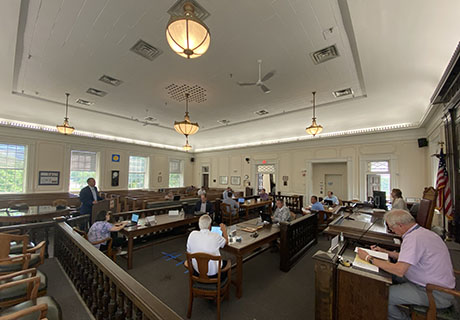Communication and 'SEL' key to pandemic-era learning, city school trustees told
In March, school districts were forced to quickly throw together a remote learning plan with the pandemic forced students to stay home, but after a summer to prepare, the Batavia City School District has developed a more comprehensive plan to educate children in the age of coronavirus.
Molly Corey, executive director of Curriculum and Instruction, outlined the virtual learning guidelines for the 2020/21 school year for members of the city schools' board of trustees on Monday night.
At the heart of the plan, Corey said, is SEL -- social and emotional learning.
"There is a variety of feelings around everything we're doing," Corey said. "We want to make people comfortable with what we do."
SEL is, according to the virtual learning guidebook, "the process through which children and adults understand and manage emotions, set and achieve positive goals, feel and show empathy for others, establish and maintain positive relationships, and make responsible decisions."
Corey said SEL includes self-awareness, self-management, being responsible for decision-making, social awareness, and developing relationship skills.
The other key elements to the learning plan include communication, instructional time, and feedback.
About 75 percent of the district's students will split time between virtual learning and in-class instruction, while the parents for 20 percent of the students have chosen virtual-only learning. The remaining 5 percent are students with special needs who will be on campus every day.
The guidebook includes a chart that highlights the differences between the hastily compiled plan for distance learning last spring and the more thoughtful plan for the new school year.
For example, "teacher check-ins" is now "Teacher-led instruction with SEL as the cornerstone of what we do," and the flexibility of daily and weekly requirements has been replaced by a scheduled and planned school day.
"Monitored attendance" becomes "attendance taken daily."
Students, and their parents, will now be expected to focus grade level/course standards using pacing guidelines.
While there were no formal assessments given last spring and grades were credit/no credit, this year will include scheduled assessments and grades and "growth-producing feedback."
All students will have a Chromebook. Middle school and high school students will use Google Classroom, while younger students will be introduced to a new program for online learning called "Seesaw."
To make all this work, communication will be key, Corey said. Teachers have to produce written communication plans for the school year to ensure students and parents have a clear idea of the process, expectations, standards and progress.
"I want parents to know that this is really a true partnership," Corey said. "To make this work, we need them with us."




